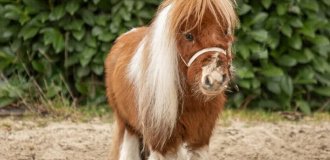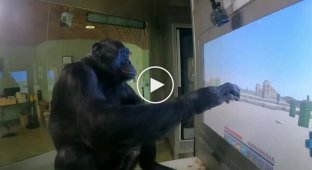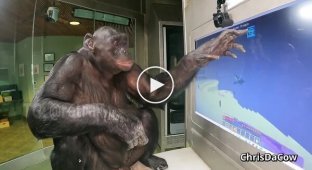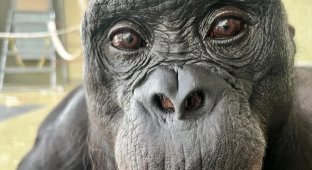He spoke freely with people, used fire, and completed Minecraft. 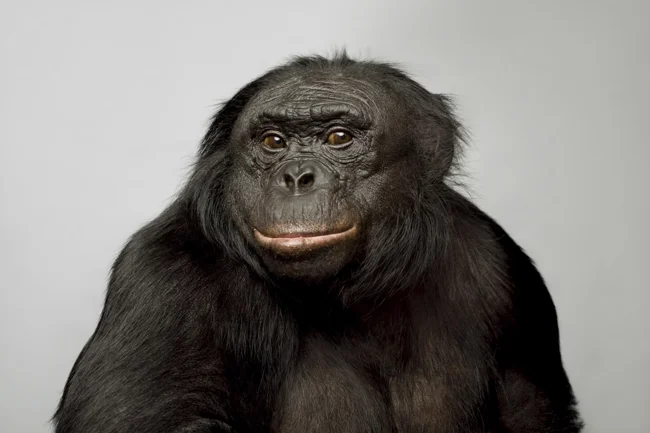
Looking at Kanzi, you catch the effect of the uncanny valley. There is something meaningful, human in his gaze.
The genius primate had no choice but to be smart - he was born in a university. A bunch of people were bustling around - they showed some complex pictures, tried to explain something clearly to their older brothers. Among these test subjects was Kanzi's adoptive mother - Matatu. True, her scientific movements were of no interest to her, and the scientists were unable to achieve any visible progress with her. But little Kanzi grasped everything on the fly, simply by observing the process! 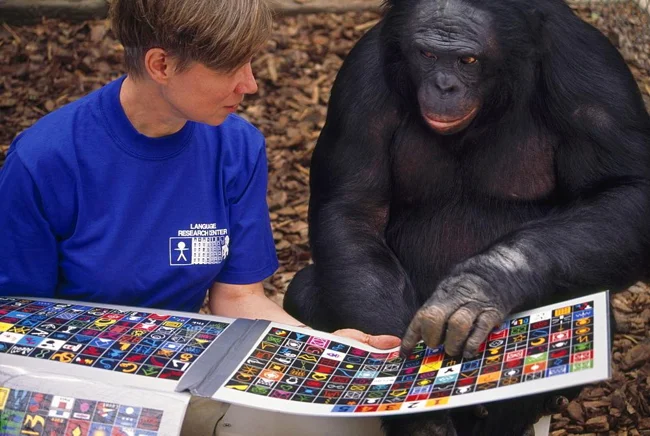
When you try to explain in a foreign restaurant what dish you want to order.
In the experiments, monkeys were taught a special language - Yerkish. It looks like a portfolio of signs and posters by provincial designers: individual words and incongruous patterns on a black background - the so-called lexigrams. It was lexigrams and Yerkish that became the language in which Kanzi could respond to people. He knew more than 350 lexigrams denoting nouns, verbs and adjectives. And it would be fine if he just knew them. Bonobos mixed them to get new meanings and built short sentences. 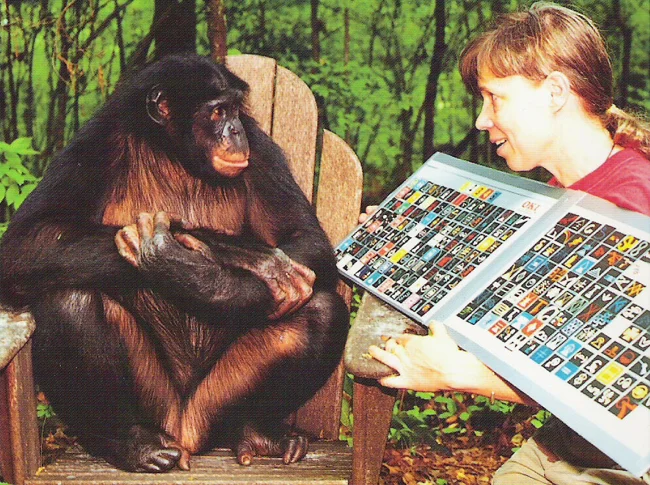
Yerkisch is an artificial language. It was invented specifically to teach monkeys human speech.
Kanzi was such a polyglot that he learned languages even in secret from people. The chimpanzee regularly watched videos of the famous gorilla Koko, who spoke ASL - American Sign Language. The bonobo learned several "words" from the footage, which scientists did not immediately realize. 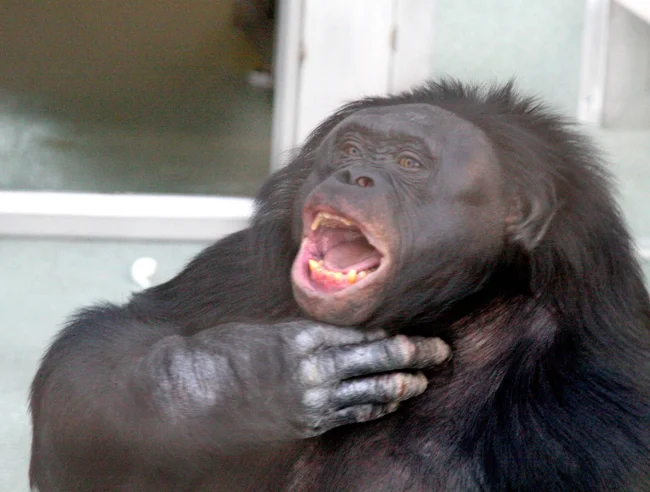
Why can't monkeys be taught to speak like humans? Anatomy doesn't allow it. Chimpanzees are not able to produce the same sounds as us due to the structure of their larynx and oral apparatus.
Kanzi could not only talk to people, but also understand native English speakers, keeping more than 3,000 words in his mind. In one experiment, eight-year-old Kanzi was seated at the same table with a two-year-old child. Both the child and the chimpanzee were asked to answer a question or perform some action. The sentences contained words that both subjects had not heard before. Based on the bonobo's and child's responses and reactions, scientists found out that Kanzi understood syntax much better than a human baby! For example: a researcher asked to feed a ball a tomato. There was no ball in the room, but there was a stuffed pumpkin for Halloween. The two-year-old girl was confused - she did not understand the task. But Kanzi immediately figured out that a toy = a ball. And therefore, he needed to be fed. 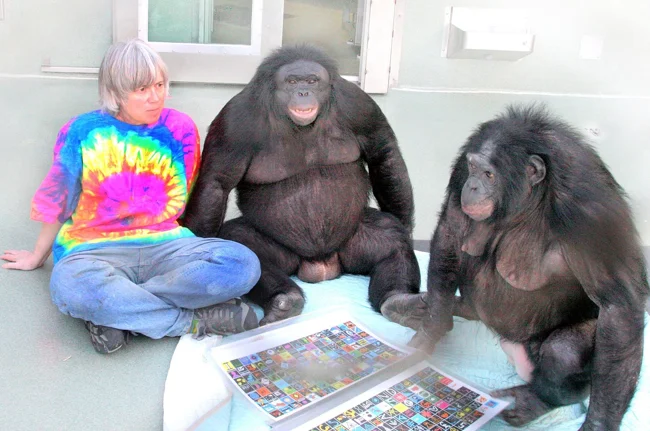
When he came to the exam after a night of sweaty cramming.
The monkey's intellectual knowledge was not limited to verbal squabbles and descriptions of his desires. Kanzi had a real spirit of an inventor. So the bonobo mastered fire! Since he was five, Kanzi had been attracted to flames. He loved to look at them, loved to watch them being made. At one point, he tried to build a fire on his own, and scientists supported his efforts. As a result, by adulthood, the bonobo knew how to find brushwood, gather it into a pile, use matches, throw in wood to keep the fire going, and even cook! Kanzi's favorite fire food was marshmallows. 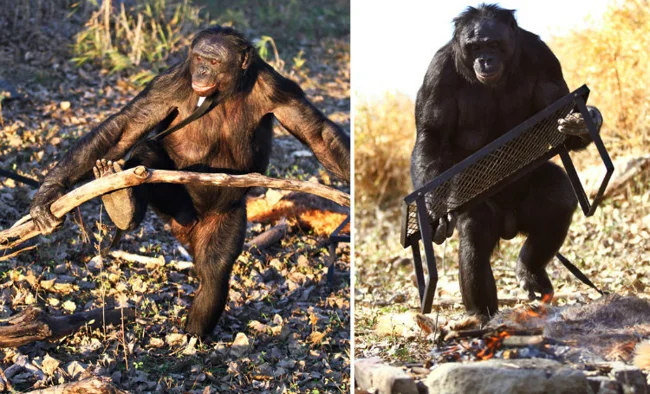
This is how Kanzi made a fire. He even knew how to install a grill grate! 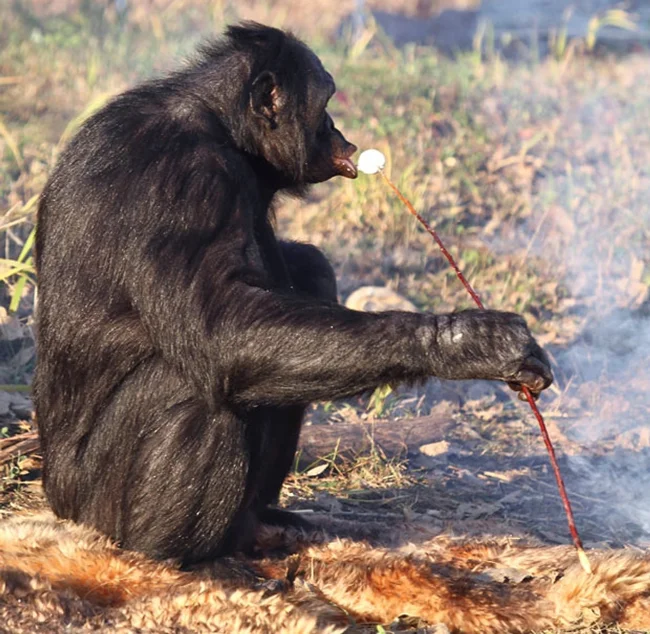
Oh, I wish summer and marshmallow shashlik would come soon, and not all this!
The first human inventions were also within Kanzi's grasp. In one of the experiments, Kanzi and his sister Panbanisha were taught to create primitive tools - a chopper. Both primates coped with this task with flying colors. Moreover, bonobos came up with a lot of uses for the stone knife: they dug, drilled, cut, and broke with it. 
These aren't just weird cuts, but traces of primate activity. The chimpanzees chopped, pressed, and screwed the tools they made to get to the goodies the experimenters hid.
Kanzi also mastered modern gadgets. Bonobo learned to play several computer games. First, Pacman, then Minecraft. And he did not play alone, but online, together with other participants. So, the first partner was a person. Until the last moment, the subject did not even suspect that his partner was a chimpanzee! The second time, Kanzi played with his brother Teko. Together they defeated the final boss of the game. 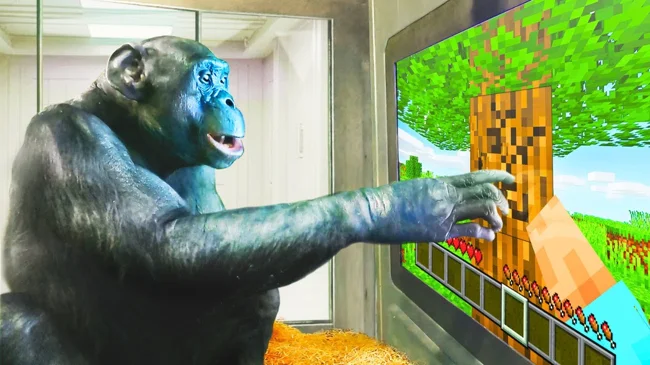
Of course, the primate did not master the keyboard and mouse. Therefore, Kanzi used a touch screen to play.
Kanzi left a mark on science not only as a subject, but also as an author! In a 2007 article about the study of the behavior and condition of great apes in captivity, Kanzi, his sister Panbanisha, and nephew Nyota are listed alongside renowned primatologist Sue Savage-Rumbaugh. She found the monkeys' contribution so significant that she decided to list the bonobos as co-authors. 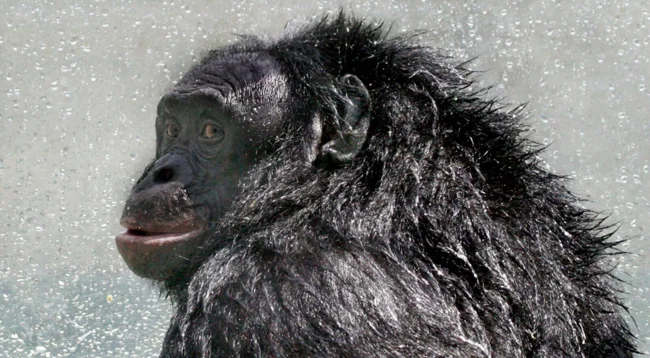
Here's someone who's definitely got a head start!
Kanzi was famous for his intelligence not only among people, but also among his fellow chimpanzees — the chimpanzee became the patriarch of his group. This is rare in bonobo society — usually the leading position in a troop of pygmy chimpanzees is occupied by females. But age took its toll. At 44, one of the most gifted chimpanzees in history has passed away. Kanzi made humanity look at primates from a different angle. He demonstrated abilities that seemed inaccessible to monkeys!
Add your comment
You might be interested in:











